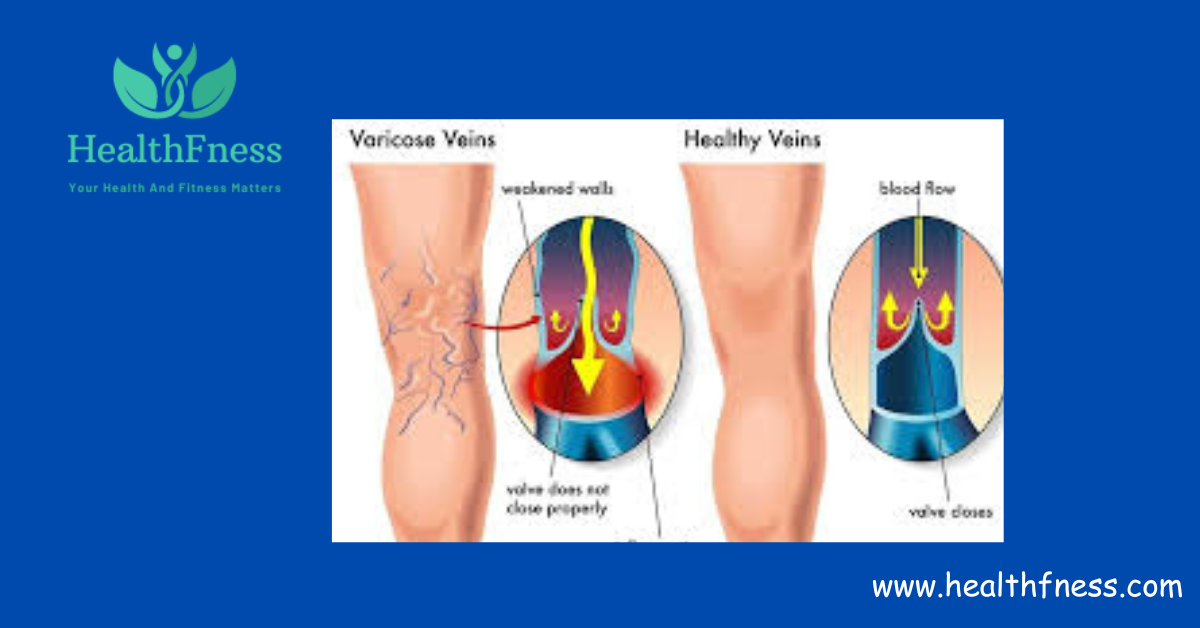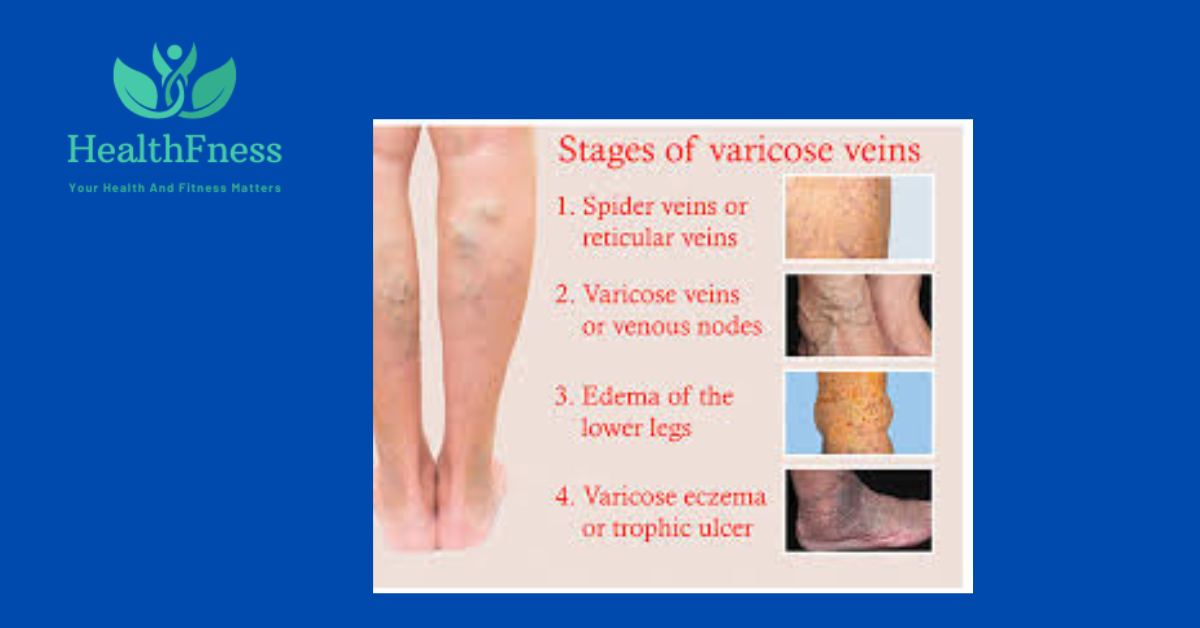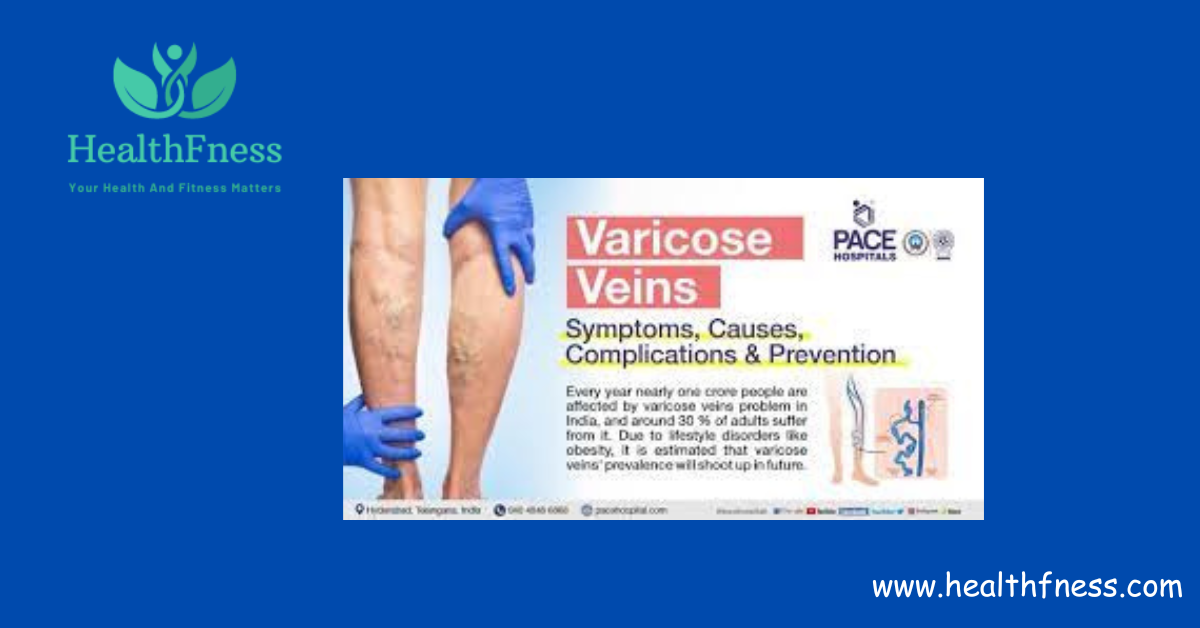Before discussing when to worry about varicose veins needs to understand what are varicose veins. Large, twisted veins referred to as varicose veins can broaden on the legs, feet, and different parts of the frame. Varicose veins ↗arise whilst the valves within the veins that assist blood drift closer to the heart end up vulnerable or damaged, causing blood to pool inside the veins. This can cause the veins to grow to be enlarged and twisted. They can affect as much as 35% of persons inside the US, making them a vast disorder. Although those veins are often concept of as a classy trouble, if left untreated, they will additionally result in health issues.

These veins have to be closely tested for any capacity fitness issues because they may be an indication of underlying circulatory problems. A variety of problems, which include blood clots pores, and skin ulcers, can stand up when blood go with flow is hampered. People can take proactive measures to avoid these problems and shield their well-known health by being aware of the signs and symptoms and related danger factors.
Symptoms Of Varicose Veins
- The bodily look of varicose veins: Many signs, ranging in severity, can be introduced on with the aid of varicose veins. The maximum noticeable sign is the actual presence of swollen, twisted, often blue or crimson-coloured veins.
- Pain and soreness: Inside the affected area addition to inflicting pain and pain, varicose veins could make the affected area painful after standing or sitting for a long term.
- Swelling, irritation, itching: swelling, infection, and itching within the affected place are also signs of this sickness.
- Skin Changes: Varicose veins can also cause skin adjustments, which include dryness or darkening of the pores and skin.
- Skin ulcers: Skin ulcers can also increase in extreme cases, which may be tough to heal and result in additional headaches.
When To Worry About Varicose Veins
Even though those veins are frequently disregarded as a cosmetic difficulty, there are some times in which getting clinical help is essential. They include:
Existing Varicose Veins ↗Getting Worse or Developing New Ones
If you see new varicose veins or a considerable change in the appearance of your current ones, this will imply a circulating problem that needs to be treated by using a health practitioner.
Existence Of Pain, Swelling, or Other Symptoms
If the affected region is inflicting aches, swelling, irritation, or different symptoms, you ought to see a health practitioner. These symptoms may point to more excessive contamination, like blood clots or pores and skin ulcers.
Deep Vein Thrombosis (DVT) and/or Blood Clot History
If you have a history of DVT or other associated health troubles, including blood clots, it is important to reveal your veins carefully and get clinical recommendations if you come across any new or worsening signs and symptoms.
Risk Factors For Varicose Veins
There are numerous risk factors associated with varicose veins. These include:
Age
The risk of developing these veins increases as a person gets older.
Gender
Women are more likely than men to develop varicose veins, in part due to hormonal changes during pregnancy and menopause.
Family history
If other family members have had this vein illness, there is a higher likelihood of developing them as well.
Obesity and absence of bodily activity
Being overweight or inactive can put extra stress on the veins, increasing the danger of growing varicose veins.
While some of those dangerous elements can’t be changed and aren’t in our management, inclusive of age and circle of relatives history, others can be addressed through lifestyle changes like exercising daily and keeping a good weight.
Pregnancy and hormonal adjustments
During pregnancy, the frame undergoes hormonal changes that could weaken the veins and cause the hazard of developing varicose veins. Additionally, the growing uterus can put pressure on the veins within the legs, increasing the hazard further.
Treatment Options for Varicose Veins
This contamination may be managed using some healing strategies, from dietary changes to surgical techniques. They encompass:
Lifestyle changes and self-care techniques
Improving stream and decreasing varicose vein ↗signs can be done with the aid of adopting way-of-life modifications together with keeping a healthy weight, participating in ordinary bodily hobbies, and warding off extended intervals of sitting or status. Self-care techniques like elevating the legs and sporting compression stockings can help manipulate signs and symptoms.
Medical Procedures
This illness can be handled with clinical operations which include vein stripping, sclerotherapy, and laser therapy. These operations are designed to seal off or get rid of the troublesome veins, thereby enhancing movement and reducing soreness. In some instances, varicose veins can be handled without surgery with the usage of minimally invasive techniques like radiofrequency or laser ablation.
Increase Physical Activity
Engaging in everyday physical pastime is a powerful way to manipulate varicose veins. Physical activity enables to improvement stream and gives a boost to the muscle groups in the legs, which can help alleviate signs and symptoms consisting of pain, swelling, and discomfort. Try to do a little exercise daily so all of your body components work properly.
Reference
You would like to read: How to treat, what causes, and how painful are varicose, or spider, veins?
FAQs
Varicose veins: What Are They?
Legs are a commonplace place for varicose veins to appear; they may be twisted, enlarged veins. They may also protrude from the skin's floor and have hues that variety from flesh to blue to crimson.
When Should Varicose Veins Concern Me?
If varicose veins impair your quality of lifestyles or cause soreness, together with ache, heaviness, or swelling in the legs, you should be worried.
Do Varicose Veins Present a Risk?
Although varicose veins are generally not dangerous, if they're no longer handled, they may purpose bleeding, blood clots, or ulcers.
What Are the Varicose Vein Risk Factors?
Heredity, age, gender (girls are extra prone), obesity, lengthy durations of sitting or standing, state of no activity, pregnancy, blood clot history, continual constipation, and sun publicity are danger factors.
How Can Varicose Veins Be Prevented?
By retaining a healthful weight, workout regularly, heading off extended sitting or status, elevating your legs whilst you're sound asleep, wearing compression stockings, and defensive your skin from the solar, you could lower your chance.
When Is It Time to Visit a Doctor for Varicose Veins?
See a physician for an assessment and treatment options in case you fear approximately the advent of your varicose veins or in case you experience signs and symptoms like pain, swelling, skin adjustments, or bleeding.
Do Varicose Veins Ever Go Away?
Treatment for varicose veins may additionally lead them to higher, but they may not completely leave. Treatment, but, can reduce signs and symptoms and beautify the veins' appearance.
Conclusion
Varicose veins are typically no longer the purpose of the problem. Still, individuals have to be looking for clinical attention if they enjoy chronic aches, look at a trade in the vein’s look, or enjoy skin ulcers and vein itching. It is crucial to be concerned and look for scientific attention immediately if a person notices that their varicose veins are getting worse or that new veins are developing if the affected place hurts or will become infected, and if they have a history of blood clotting disease. Medication, a balanced food plan, and ordinary exercise are all useful resources for managing those signs and symptoms.
Video Credits:


